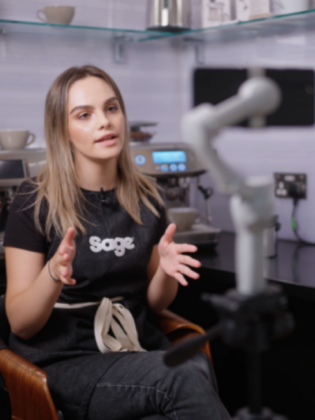81% of shoppers start their customer journey online, according to Klarna. Virtual shopping is changing the landscape of e-commerce and showing brands what is truly possible online.
As customers have demanded more authentic and personalised shopping experiences, brands have responded to that online by creating engaging interactions with customers on more virtual platforms. This bridges the gap between the real world and online, ensuring your brand can offer a truly omnichannel experience that is vital to success. Customers are used to a few images, a product description and some reviews in a standard, linear format. Virtual shopping is different; it aims to offer a far more interactive and immersive shopping experience. By leveraging technology that connects people, such as live chat and videos, virtual shopping creates experiences that convert.
Customers value the immersive and personalised shopping experience. On the most basic level, it allows them to find exactly what they’re looking for. The personalisation that comes through a customer’s data can both increase the customer’s affinity towards the brand and guide them towards products they are statistically more likely to purchase. Klarna’s 2021 research showed that, while only 25% of shoppers reported having attended a live video shopping event, 60% of those who did, said it improved their online shopping experience, and 38% prefer it to traditional e-commerce.
What’s so game-changing about virtual shopping?
Standard e-commerce is very by the numbers; it’s about listing the technical information, slotting in keywords and uploading a few images of the product. While that does work, the lack of customer engagement and uniform experience can be uninspiring. Here are two key areas in which virtual shopping stands out:
Visualisation
Virtual shopping spaces try to bring the customer as close to the product as possible. And there is no better way to achieve this than to build a human connection between them and the person representing your brand on the other end. Seeing the product being used by a friendly product expert helps the customer better understand how it works and even helps them visualise how the product can fit into their lifestyle. With this human-to-human interaction, you can instil a sense of trust in your prospective buyer, which is crucial in driving conversion.
Bridging the online and physical gap
The gold standard will always be a high-class in-store experience, but virtual shopping is all about recreating that environment and building human connections between shoppers and your brand. Creating that immersive but familiar experience is essential to making customers feel comfortable in what could be a new space for them. Through demonstrations, masterclasses, live chats, and videos, you can cultivate a personal connection with the customer, as they get to ask questions and have them answered in real-time by trained and knowledgeable people.
The growth of e-commerce cut out the role of product experts and friendly assistants when shopping online, but customers are showing an appetite for speaking to real people, demonstrations, one-to-ones, masterclasses and much more. The entertainment, accessibility, convenience and community that come from live selling make conversion much more likely than typical e-commerce.
How does this increase conversions?
It’s not as simple as setting up a virtual shop and watching the conversions grow. Thought must be put into what technological tools will be provided, how well they will work, user-friendliness and the audience.
One of the most important aspects of shopping in-store is the social interaction that comes with it, and this is difficult to replicate on traditional e-commerce platforms. Live video shopping has the potential to bridge this gap with its demonstrations and one-on-one interactions, effectively capturing the 70% of customers lost at checkout.
Fundamentally, customers want to understand the product, which can be achieved through live video selling. The more information they have about the product and how it could fit into their lives, the more confident they can feel about making a purchase.
Customers appreciate brands that demonstrate some level of interest in them. The effects are both psychological and very real, customers feel as if their brand of choice knows and cares about them, and effective personalisation can help save time and money by making the right purchase, the first time.

Moengage’s 2023 Personalisation Pulse Check report asked customers what leads them to pick one brand over another, bar product quality. 35% cited communications about offers and discounts based on items in the checkout, and 30% cited messages about new sales and products based on interests. Clearly, customers want their favourite brands to learn about their tastes and interests, and use that to make better recommendations.
Luxury appliance brand, Sage Appliances, became familiar with online, hybridised selling with the creation of Sage Studios, in which highly-trained and vetted product experts delivered masterclasses, live demonstrations, one-on-one sessions and much more direct from the Studios. This is what helped Sage Appliances become an official TikTok Shop UK partner. It saw a marked increase in social media engagement versus its other online channels, with over a million views in the first 90 days. With Stellar’s help, Sage Appliances generated the single biggest-selling event in TikTok EU history, with over 300,000 product views and a click-through rate of 18.7%.
Give customers what they want
In some respects, virtual selling has introduced very few brand-new concepts that were not already a part of the physical in-store experience. It’s all about bringing what customers expect in physical stores into a digital space. That means giving customers as good a feel for the product as technology will allow, friendly assistants who remember you and your tastes, and positive, memorable experiences they will forever associate with that brand. Live video selling provides the all-important human connection that sees customers returning to your brand. It also empowers you to provide valuable aftercare to buyers, as well as grow a community of Customers for Life in a more deliberate way.
Regular e-commerce platforms are still expanding, but are introducing more technological innovations. Being able to watch a live masterclass of a product you’ve just bought, or being prompted to make use of one-on-one chat assistance are the types of innovations customers want. It creates a more personalised purchase journey and increases social interaction, something all shoppers place importance in.
Virtual shopping achieves increased conversion rates because it bridges the gap between the digital and real world. The 24/7 and immediate nature of the digital world combined with the detail and personal touch of the real world makes for a compelling proposition. Virtual shopping will become the norm as building them becomes cheaper and simplified, so it is essential that all brands with an e-commerce platform future-proof against this by drawing up plans for their virtual shop today.
If your brand isn’t thinking about building a virtual shop and catching all those customers who fall away at different parts of the customer journey, then your competitor definitely is.

